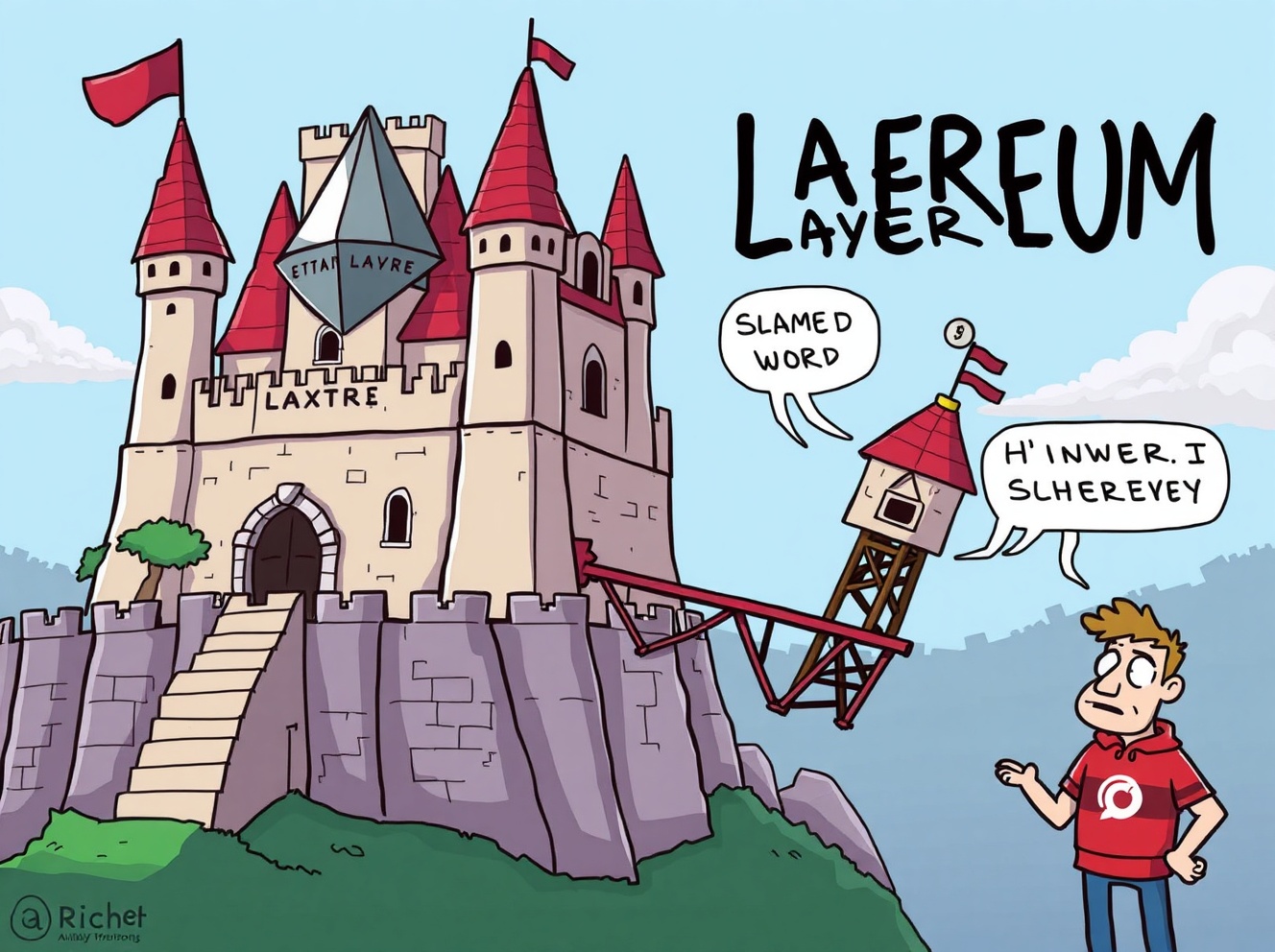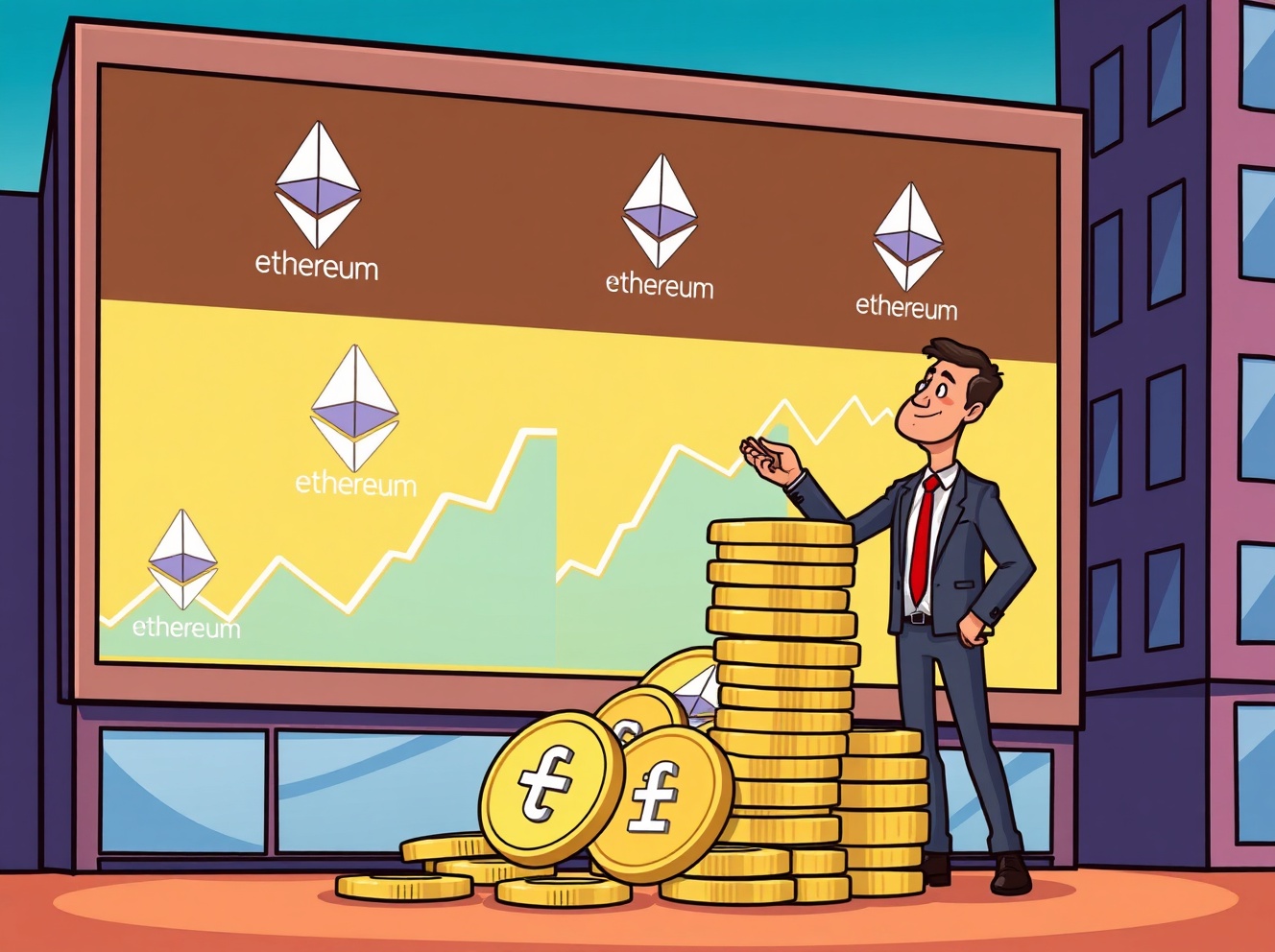
BitcoinWorld Critical Concerns: Unpacking the ‘Bogus’ Claims Around Layer 2 Security A bombshell claim from Anatoly Yakovenko , co-founder of Solana , has sent ripples through the crypto community. He recently labeled the assertion that Ethereum Layer 2s inherit the security of Layer 1 as ‘completely bogus.’ This provocative statement challenges a fundamental belief within the blockchain space and ignites a crucial conversation about Layer 2 security and its true implications. What’s the Big Deal About Layer 2 Security Inheritance? Many assume that by building on top of Ethereum , Layer 2 solutions automatically gain the same robust security guarantees. This perception is a cornerstone of their value proposition. However, Yakovenko argues that this isn’t entirely accurate, highlighting potential vulnerabilities that often go unaddressed. His comments, made during an active discussion on X, delve into the often-overlooked complexities. He emphasizes that while Layer 2s aim to scale Ethereum , they introduce their own set of security and decentralization trade-offs that warrant closer scrutiny. Are Layer 2 Security Mechanisms Truly Decentralized? One of Yakovenko’s primary concerns revolves around decentralization. He points out that many Layer 2s rely on multi-signature (multisig) arrangements to control user funds. While multisigs offer a degree of protection, they concentrate power in the hands of a few signers. Centralized Control: If a small group controls the multisig, they could potentially freeze or misappropriate funds. This introduces a single point of failure. Trust Assumptions: Users must trust the individuals or entities holding the multisig keys. This deviates from the trustless ideal of a true Layer 1 blockchain. Governance Risks: Decisions regarding upgrades or emergency protocols often rest with these centralized entities, impacting overall Layer 2 security . This raises a fundamental question: Can a system be truly decentralized if its core security relies on a select few? Yakovenko suggests that the current state of many Layer 2s falls short of the ideal. The Auditing Nightmare: A Challenge for Layer 2 Security Another significant point raised by Yakovenko is the sheer complexity of Layer 2 codebases. He suggests that their extensive nature makes comprehensive auditing ‘practically impossible.’ This raises serious questions about the hidden risks within these systems. Consider the implications: Vulnerability Exposure: Unaudited or partially audited code can harbor critical bugs or exploits, leaving user funds vulnerable to attack. Development Speed vs. Security: The rapid development cycles of many Layer 2s might prioritize speed over thorough security checks. Expert Scarcity: Finding enough highly skilled auditors capable of dissecting these intricate systems is a major challenge for ensuring robust Layer 2 security . Without rigorous auditing, the promise of inherited security becomes questionable. Users are left to trust systems whose underlying mechanisms may not have been fully vetted, posing a significant risk to the integrity of funds. What Does This Mean for the Future of Layer 2 Security ? Yakovenko’s remarks serve as a vital wake-up call for the entire blockchain ecosystem. It compels developers, users, and investors to critically re-evaluate the foundational assumptions about Layer 2 solutions. This isn’t about dismissing Layer 2s entirely, but rather about fostering a more realistic understanding of their current state and potential limitations. The conversation should shift towards: Enhanced Transparency: Clearer communication about the specific security models and trust assumptions of each Layer 2. Improved Auditing Practices: Developing better tools and methodologies for auditing complex codebases. Progressive Decentralization: A roadmap for Layer 2s to move towards greater decentralization in their governance and fund control mechanisms, thereby strengthening Layer 2 security . The goal is to build a more resilient and truly secure multi-chain future, acknowledging the challenges along the way. This critical dialogue is essential for the long-term health of the crypto space. Anatoly Yakovenko’s candid assessment of Layer 2 security inheritance is a stark reminder that innovation often comes with trade-offs. While Layer 2s are crucial for scaling, their security models require continuous scrutiny and improvement. His ‘bogus claim’ statement should not be seen as an attack, but as a catalyst for a healthier, more transparent dialogue within the blockchain community. Ultimately, ensuring robust security is paramount for the long-term success and widespread adoption of these vital scaling solutions. Frequently Asked Questions About Layer 2 Security What is Layer 2 security inheritance? It refers to the idea that a Layer 2 solution, built on top of a Layer 1 blockchain like Ethereum , automatically benefits from the underlying Layer 1’s robust security features. The assumption is that the Layer 2 inherits the same level of safety and immutability. Why does Anatoly Yakovenko call Layer 2 security claims ‘bogus’? Solana co-founder Anatoly Yakovenko argues that Layer 2s introduce their own security and decentralization trade-offs. He points to issues like centralized multisig control over user funds and the immense complexity of Layer 2 code, which makes thorough auditing practically impossible. These factors, in his view, weaken the claim of direct security inheritance. What are the main security concerns with Layer 2s? Key concerns include potential centralization through multisig governance, the risk of unpatched vulnerabilities due to complex and unauditable codebases, and the inherent trust assumptions required for their operation. These factors can lead to risks like fund freezes or exploits. How do multisig arrangements impact Layer 2 security ? Multisig arrangements, while offering some protection, can centralize control. If a small group of individuals or entities holds the keys, they effectively have control over user funds and critical protocol decisions. This introduces a point of failure and a trust requirement that contradicts the decentralized ethos of blockchain, potentially compromising Layer 2 security . What is being done to improve Layer 2 security? Efforts are underway to enhance Layer 2 security through improved transparency in their security models, the development of more sophisticated auditing tools and practices, and a push towards progressive decentralization of governance and fund control mechanisms. The community is actively discussing these challenges to build more robust solutions. Did Anatoly Yakovenko’s insights on Layer 2 security spark your interest or challenge your assumptions? Share this crucial discussion with your network and join the conversation! Your voice helps shape the future of decentralized technology. Share this article on social media and let’s explore these critical concerns together. To learn more about the latest Layer 2 security trends, explore our article on key developments shaping Ethereum Layer 2s institutional adoption. This post Critical Concerns: Unpacking the ‘Bogus’ Claims Around Layer 2 Security first appeared on BitcoinWorld .
Bitcoin World
You can visit the page to read the article.
Source: Bitcoin World
Disclaimer: The opinion expressed here is not investment advice – it is provided for informational purposes only. It does not necessarily reflect the opinion of BitMaden. Every investment and all trading involves risk, so you should always perform your own research prior to making decisions. We do not recommend investing money you cannot afford to lose.
XRP Eyes $3 Breakout as Shiba Inu Stagnates and Ethereum Tests $4,000

XRP is approaching a key resistance at $2.75-$2.80, Shiba Inu shows declining volatility in a tight range around $0.0000103, and Ethereum nears $4,000 after stabilizing above its 200-day moving average. Bitcoin World

Unlocking the Mystery: What the $2,505 CME Bitcoin Futures Gap Means for Savvy Traders
BitcoinWorld Unlocking the Mystery: What the $2,505 CME Bitcoin Futures Gap Means for Savvy Traders The world of cryptocurrency never truly sleeps, but traditional markets do. This difference often creates fascinating phenomena, like the recent CME Bitcoin futures gap . When CME Bitcoin futures opened with a notable $2,505 difference, it immediately captured the attention of traders and analysts alike. This event highlights the unique interplay between traditional finance and the 24/7 crypto market. Understanding the CME Bitcoin Futures Gap Phenomenon On a recent Monday, CME Bitcoin futures began trading at $113,495. This was a significant jump from the previous Friday’s close of $110,990, leaving behind a $2,505 gap. But what exactly causes this? It’s simpler than it sounds: Weekend Closure: The CME Group , a regulated derivatives exchange, closes its futures markets over the weekend. 24/7 Spot Market: In contrast, the underlying Bitcoin spot market operates continuously, 24 hours a day, 7 days a week. Price Discrepancy: Any substantial price movement in Bitcoin during the weekend, while futures are closed, leads to a gap when the futures market reopens on Monday. This specific $2,505 difference showcases weekend volatility. This phenomenon isn’t new; it’s a recurring feature of the futures market when the underlying asset trades around the clock. Recognizing this pattern is crucial for anyone monitoring Bitcoin’s price action. Why Do Traders Care About the CME Bitcoin Futures Gap? For many traders, the CME Bitcoin futures gap is more than just a data point; it’s a potential indicator. A widely observed theory in technical analysis suggests that futures prices tend to “fill” these gaps. This means the price might eventually move back to the level where the gap originated, aiming to align more closely with the spot market. This “gap fill” theory can influence trading decisions: Potential Price Targets: Traders might view the gap as a magnet, expecting the price to revisit those levels. Strategic Entries/Exits: Some use gap levels to inform their entry or exit points for trades, anticipating a reversal or continuation. Market Sentiment: Large gaps can also reflect strong weekend sentiment, indicating significant shifts in investor perception. However, it’s important to remember that gap filling is not guaranteed. While historical data often shows gaps being filled, market conditions can change, and prices may move in unexpected directions. Always consider broader market trends. Navigating Volatility: Strategies for the CME Bitcoin Futures Gap Understanding the dynamics of the CME Bitcoin futures gap can empower traders to make more informed decisions. Here are some actionable insights to consider: Observe Spot Price Action: Keep a close eye on the 24/7 spot Bitcoin market over the weekend. Significant movements there are the primary drivers of futures gaps. Combine with Other Indicators: Don’t rely solely on gap theory. Integrate it with other technical analysis tools like volume, moving averages, and support/resistance levels for a more robust strategy. Risk Management is Key: Futures trading carries inherent risks. Always implement stop-loss orders and manage your position sizes carefully, especially around potential gap fills. Consider Macro Factors: Broader economic news, regulatory updates, or significant industry announcements can override typical gap-filling behavior. Stay informed about the wider market landscape. While the gap often acts as a point of interest, it’s just one piece of the puzzle. Successful trading involves a holistic approach, combining technical analysis with fundamental understanding and disciplined risk management. The $2,505 CME Bitcoin futures gap serves as a vivid reminder of the unique characteristics of the cryptocurrency market compared to traditional financial instruments. It highlights how continuous spot trading interacts with regulated futures markets that observe traditional hours. While the theory of gap filling offers intriguing possibilities for traders, it’s crucial to approach such phenomena with a comprehensive strategy, robust risk management, and a keen awareness of the broader market environment. By understanding these dynamics, traders can better navigate the exciting and often volatile world of Bitcoin futures. Frequently Asked Questions (FAQs) What is a CME Bitcoin futures gap? A CME Bitcoin futures gap occurs when the opening price of CME Bitcoin futures on Monday is significantly different from its closing price on the preceding Friday. This happens because the underlying Bitcoin spot market trades 24/7, while the CME Group futures market closes for the weekend. Why do these gaps often “fill”? The “gap fill” theory suggests that market prices tend to revert to the level where the gap occurred. This is often attributed to market inefficiencies or psychological factors, where traders see the gap as an unfilled price area that needs to be retested. Are all CME Bitcoin futures gaps filled? No, not all gaps are filled, and there’s no guaranteed timeframe for a gap to fill. While many gaps do eventually fill, some may remain open for extended periods, or the market may move in a different direction entirely. How can traders use the CME Bitcoin futures gap in their strategy? Traders might use the gap as a potential price target or a reference point for anticipating future price movements. Some might look for reversal patterns around gap levels, while others may trade in anticipation of the gap filling. However, it should always be used in conjunction with other technical and fundamental analysis. Where can I find data on CME Bitcoin futures? You can find official data and information on CME Group’s website, as well as on various financial data platforms and cryptocurrency charting services. Did you find this analysis of the CME Bitcoin futures gap insightful? Share this article with your fellow crypto enthusiasts and traders on social media to help them understand this fascinating market phenomenon! To learn more about the latest Bitcoin market trends, explore our article on key developments shaping Bitcoin price action. This post Unlocking the Mystery: What the $2,505 CME Bitcoin Futures Gap Means for Savvy Traders first appeared on BitcoinWorld . Bitcoin World











